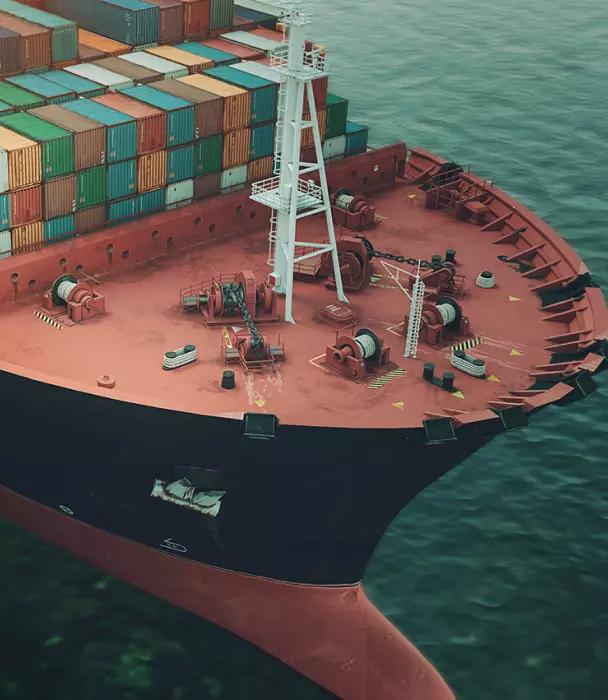Introduction
With the implementation of ocean alliances, shippers now have access to comprehensive logistics networks. The trick is figuring out how to take advantage of these connections. Here are some key factors to consider as you book shipments through an alliance:
What Are Ocean Alliances?
Ocean alliances are cooperative groups of carriers that commit to vessel-sharing agreements in order to help cover as much of the ocean shipping market as possible. These agreements enable the participating carriers to reduce their costs by sharing vessels, crew and port facilities.
Ocean alliances are a relatively new concept, but they have been gaining momentum over the last few years. Currently, there are six major ocean alliances operating: The Alliance (The Alliance), Ocean Network Express (ONE), P3 Network (P3N), NYK Line/Hana World Wide Freight Forwarding/NYK Logistics System/Mitsui O.S.K Lines Group Joint Service Agreement (JSA), OOCL group and 2M2L group
Which Carriers Are in Which Alliance?
Now that you're familiar with the major alliances and their roles in the industry, let's break down which carriers are in which.
-
The 2M Alliance is made up of MSC, MAERSK and ZIM.
-
The Ocean Alliance is made up of CMA- CGM, COSCO, OOCL (purchased by Cosco), and EVERGREEN.
-
THE Alliance includes HAPAG LLOYD (HHJ), NYK, YANG MING, MOL, K-LINE and HYUNDAI MERCHANT MARINE (HMM).
Technology Standardization
The first step in standardization is the creation of a single technology platform for carriers to use. This allows them to share information and data, as well as make decisions more quickly than they could before. With access to data from all the carriers involved in an alliance, there are many opportunities for carriers to improve their operations. For example, knowing which routes are most profitable at any given time can help increase efficiency by steering ships away from less-productive areas and toward those with higher returns.
Another benefit of technology standardization is that it makes communication between carriers easier than ever before. Instead of having separate systems for managing their operations and communicating with each other about cargo shipments, members of an ocean alliance now have one system that allows them all to communicate seamlessly with each other through a common platform
Where Does Each Ocean Alliance Ship?
Ocean Alliances, like their real-world counterparts, are made up of ships that carry goods and passengers around the world. They provide an efficient and affordable way to travel between ports all over the globe.
Each ocean alliance serves a specific geographic region, defined by trade lanes that connect major cities like New York City with San Francisco; Hong Kong with Singapore; London with Amsterdam; Cape Town with Bangkok; and so on. Each alliance has its own headquarters in one of these cities where you can find offices for shipping companies or other businesses that need to ship goods or passengers through that particular region's trade routes.
Each ocean alliance also serves dozens of ports along its trade routes—each port has a pier where cargo ships dock, allowing them to load and unload everything from apples to cars onto their decks before sailing off again on their next leg of the journey.
Booking Strategies
When it comes to booking strategies, it's important to understand the difference between the three alliances.
Each alliance serves a different mix of trade lanes and preferred ports. For example, Maersk Line has access to ports in South America, North America, and Europe. MSC Mediterranean Shipping Company (MSC) also offers services throughout Europe but also has routes for Asia-Pacific and Africa/Middle East shipping. Finally, CMA CGM operates from all over the world with a focus on connecting Europe with Africa/Middle East countries such as Egypt or Morocco through its West Coast Express Line service—which is run by a sister company called Grand Alliance Ltd.—and onto Australia via its Southern Cross Line service —which is operated by another sister company called Pacific International Lines Co Ltd (PIL).
See what else you can get through an alliance.
An alliance is a community of like-minded businesses that work together to help each other grow. The members of an alliance share resources, expertise and experiences with their partners, creating opportunities for everyone involved. If you're interested in becoming part of an alliance, check out the list below:
-
Which alliances are near you?
-
How far do they cover?
-
How many ports do they have?
-
Do they offer any other services besides shipping or logistics?
Conclusion
With so many alliances and carriers available, it can be hard to know which one to pick. But with the right booking strategy, you can use the benefits of ocean alliances to save time, money and hassle. The best thing about this system is that you have a choice: if one alliance doesn’t work for your shipment, there are plenty of others out there!


